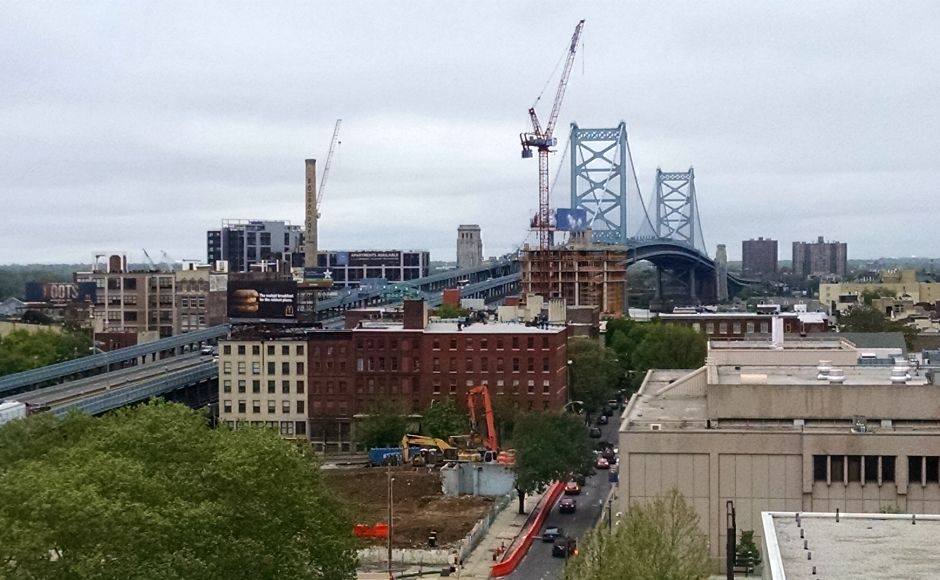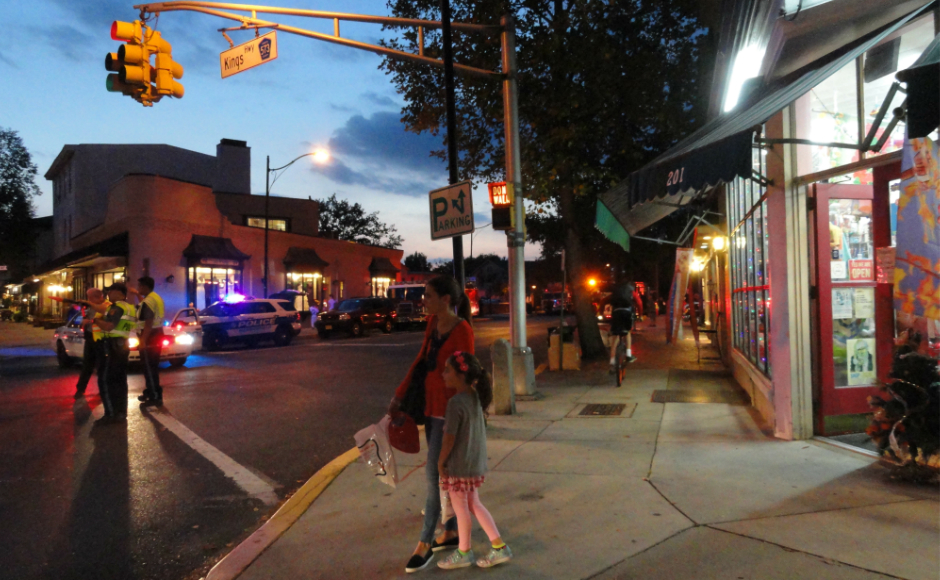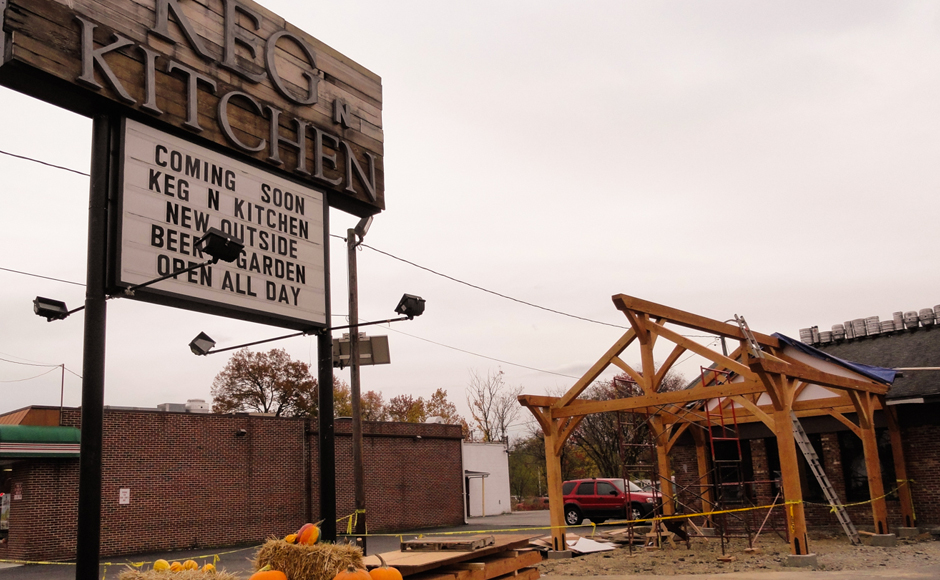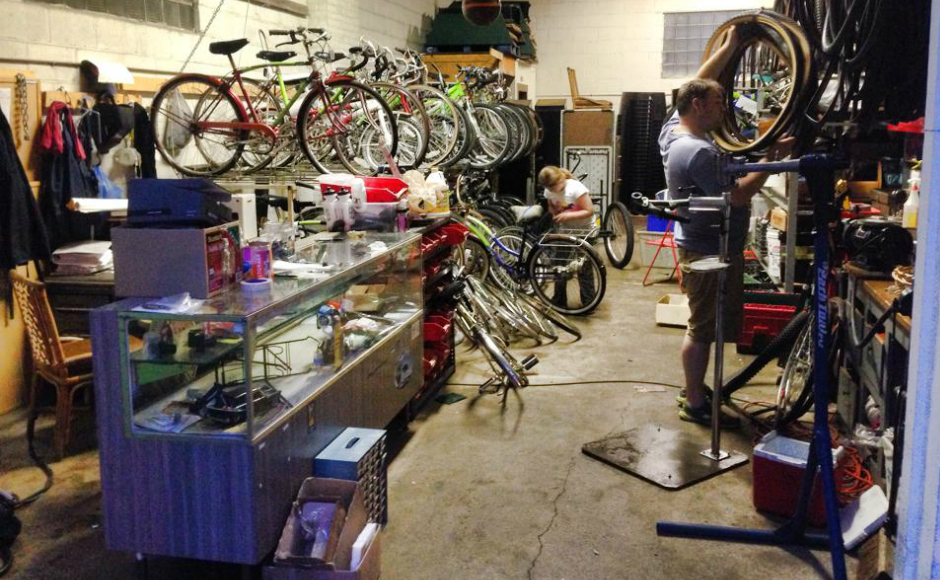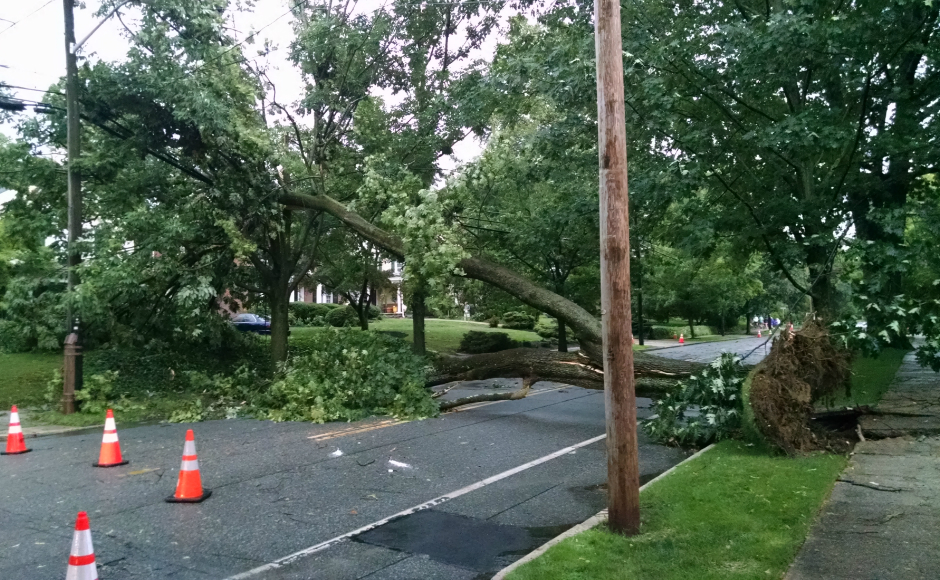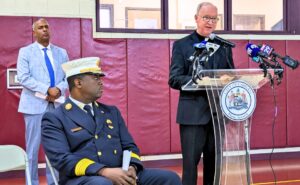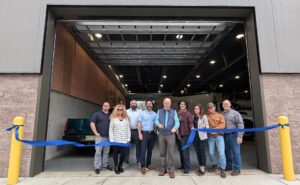From ‘Future Forces’ to a forecasted $40-billion shortfall in federal infrastructure dollars, the Delaware Valley Regional Planning Commission is asking residents to think broadly about local change on a longer timeline.
By Matt Skoufalos
When human experience is measured by the moment, the concept of a 30-year-timeline for anything is vague, difficult to conjure, and easily dismissed.
Homeowners might recognize the lifespan of a mortgage as a relevant comparison, but in the 30 years it can take to pay off a house, they might no longer recognize the neighborhood.
Anticipating the differences between the greater Philadelphia region of today and that of the year 2045 is a lot like that. Understanding the possible factors that will drive those changes in the years in between is the job of the nine-county, bi-state Delaware Valley Regional Planning Commission (DVRPC).
“Thinking long-term, large-scale at a regional scale is tough,” and projecting out to a future 30 years away is a complicated task, said DVRPC Executive Director Barry Seymour. Many of the decisions that affect regional development are vetted at the local, municipal level, and yet it’s a challenge to engage residents in order to help them understand how the plans that will affect their long-term futures are shaped, he said.
Within the nine-county region in which the DVRPC has oversight are 5.7 million people in 352 municipalities across New Jersey and Pennsylvania. Many of those older, smaller towns contain “really a great opportunity” for redevelopment and reinvention throughout the 30-year cycle DVRPC is studying, Seymour said.
“Over and over, these communities have a chance to build on their foundations and build on their strengths and just become stronger, more viable communities,” he said.
Linking those places in the next 30 years will take more than $100 billion in repairs, improvements, or maintenance to structurally deficient bridges, roadways, and other systems within the region, DVRPC estimates. The agency also estimates, however, that only about $60 billion in federal funds will be available in that timeframe. When infrastructure investments are meant to last 50 years or more, and the process to plan and apply for the federal funding to make them is itself years in the making, “we need to be very strategic about where we place our money,” Seymour said.
“At the end of the day, the resources will always be constrained.”
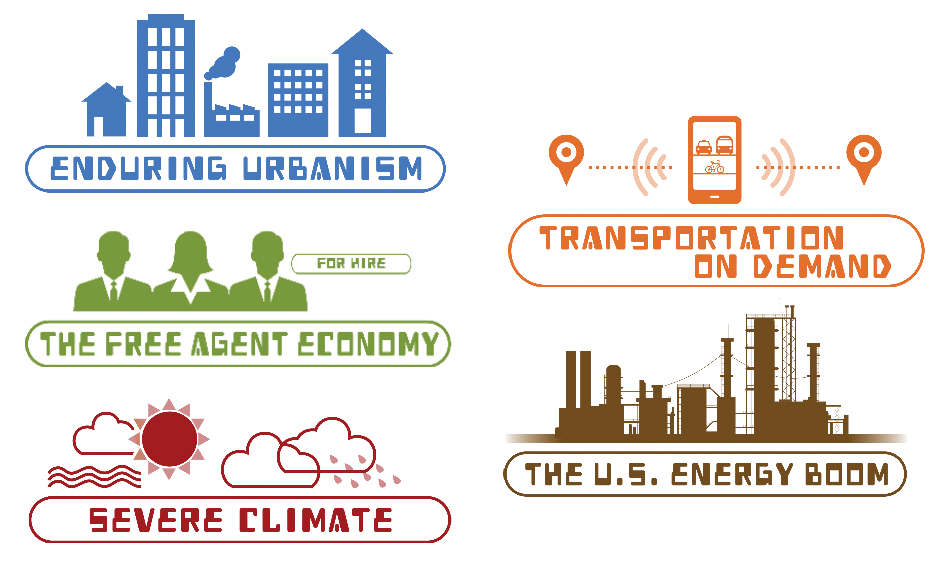
The DVRPC has identified five Future Forces as having a regional impact through 2045. Credit: DVRPC.
Future Forces
In drafting Connections 2045, its long-range regional planning document for landing its share of those federal dollars, DVRPC has the task of projecting an environmental, land use, transportation, and economic development plan for the Greater Philadelphia of 30 years from now.
In addition to the specific regional and local needs of each of the nine counties it oversees, the agency has identified five, major, external forces with the potential to greatly affect the area along that timeline. Brett Fusco, Assistant Manager of Long-Range Planning at DVRPC, heads up the team dedicating to estimating their impact.
As defined within the DVRPC Future Forces report, they are:
Enduring Urbanism – Millennials and empty-nesters moving back to walkable urban centers are the start of a long-term trend, as future generations show an even stronger desire for city living and walking, biking, and transit.
The Free Agent Economy – Individuals must create their own economic opportunities and contribute more toward their healthcare and retirement, as labor efficiency and the rising cost of full-time employees cause large companies to continue to reduce their workforces.
Severe Climate – Increasing atmospheric carbon levels, due to continued global use of fossil fuels, lead to significant disruptions from climate change. The region must prepare for hotter and wetter weather, more frequent and intense storms, and rising sea levels.
Transportation on Demand – Smartphones, apps, and real-time information help people get around using a multimodal network of car sharing, taxis, ride sharing, transit, biking, bike sharing, walking, and new modes such as on-demand micro transit bus service and ride sourcing, where a vehicle is e-hailed for a point-to-point trip.
The U.S. Energy Boom – The region’s economy grows with domestic natural gas extraction and distribution, and renewed manufacturing. An abundance of domestically produced energy keeps the cost of energy low and helps the region and the nation become more energy independent.
Planning for an elusive future mean reconsidering traditional ideas about what neighborhoods in the region have looked like, particularly as the impact of those projections is altered by the influence of those Future Forces. Fusco described the elements of how each is projected to manifest in the years approaching 2045.
Enduring Urbanism. Throughout the region, families with young children will continue to gravitate towards communities with walkable downtowns that have the vibrancy and activity of a city.
Their influence is likely to reshape these communities as “a blurring of city and suburb” in terms of density, access, and social programming. The added revenue of upwardly mobile families can allow such places to regenerate with new amenities and broader tax bases, but as population and the pace of life pick up, communities will come to require a variety of transportation options.
“What we think people are going to want in that future is walkable communities to a main street that’s lively,” Fuco said. “The communities that don’t or can’t make those transitions into recreating themselves as more walkable, incorporating transit, are the areas of the region that may struggle.”
Towns without such amenities should ask themselves how they can reinvent their economies, creating jobs or infrastructure. As corporations have shifted, the wave of suburban office parks of a generation ago today lack access to transportation and “someplace interesting to go for lunch,” Fusco said. They’re likely to lose business as jobs shift towards denser centers of activity.
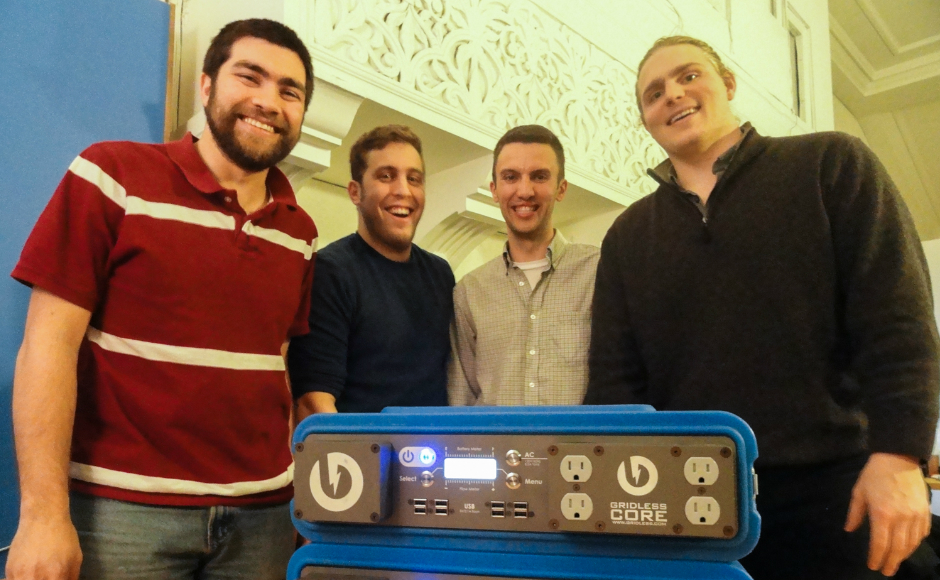
(From left) Andrew Leonard, Jason Halpern, Patrick Murphy, and Thomas Castner of the Collingswood-based startup, Gridless Power. Credit: Matt Skoufalos.
The Free Agent Economy. These conditions are also exacerbated by the continued growth of the “free-agent economy,” in which an environment of outsourcing leads workers to create their own economic opportunities, Fusco said.
The stability of lifelong careers has given way to interim jobs, which have in turn given way to gigs and contract work, which “is not a long-term employment solution, and doesn’t offer the benefits of full-time employment,” Fusco said.
“For every person in the region, we’ve tended to have 0.6 jobs; the free-agent economy is breaking that relationship,” Fusco said. “Do we define a job differently? We operate in an increasingly complex world and system, and it becomes very difficult to get every last aspect of what’s impacting the economy.”
These destabilizing conditions spur renting over home ownership, delay families’ plans to have children, and place greater emphasis on higher education in an increasingly competitive professional environment. Economic development in such a system will swing in a tension between “investing in people or investing in places,” and the former “will pay off in time,” Fusco said.
“Better education, better training, being more empowered in being more entrepreneurial…it’s probably not going to hit you the home run tomorrow, but 10 to 15 years from now, it shows up,” he said. “That’s the challenge of being able to see that long-term reward, and that’s not easy to do.”
Community reinvestment can also spur financial development, and may be done creatively and cheaply. “Pop-up” economies offer returns on temporary structures like beer gardens, parklets, or other shared spaces. They can generate short-term revenues, boost interest in local property, or activate otherwise “dead zones” with new and creative uses, affording the business opportunity of a dormant storefront, for example, to a temporary tenant who might want to give a business idea a trial run.
Such strategies fall under the description of “tactical urbanism,” and can even be used to drive permanent changes by proving test cases on a trial basis, Fusco said. The research opportunity of trying to modify usage behaviors can often be bought as cheaply as materials like roadway paint, traffic cones, and concrete planters.
“Try it in a low-cost way and see what happens,” Fusco said. “Do it for a month. See how people use the space differently.”
Transportation on Demand. Many key spaces are ripe for redefinition in transportation corridors, where residents can increase access for various modes of transit.
On-demand transportation options will emerge in the coming decades in a future with less car ownership but a more mobile populace, Fusco said. Uber-like cabs, bike shares, car shares, and shuttles driven by smartphone apps are ways in which he said people will be offered “mobility as a service.”
Severe Climate. The two future projections with seemingly the greatest degree of variability also could have the greatest potential impact to the region in the coming decades.
The impact of climate change dominates conversations about everything from seasonal economies to the frequency and intensity of rain and snow storms, and sea levels rise along with flooding risk. On macro and micro levels, the potential damage that could be done to transportation infrastructure by extreme weather could be enough to slow the global economy.
The U.S. Energy Boom. An abundance of domestically produced oil and natural gas is projected to keep costs of fuel and electricity low, particularly as the regional economy grows around renewed manufacturing and distribution along the Delaware. Of course, boom projections can also foretell busts, and the higher wages and potential reductions in inequality that could be driven from economic gains in the U.S. energy sector could be quickly reversed if the bubble breaks. Oddly, a green-energy renaissance could do just that.
“We’re not very far from a clean tech revolution that can potentially upend all those investments,” Fusco said. “As it is now, the per-unit cost of solar and wind power are really approaching the costs of coal and natural gas for generating electricity. The question is scaling that up.”
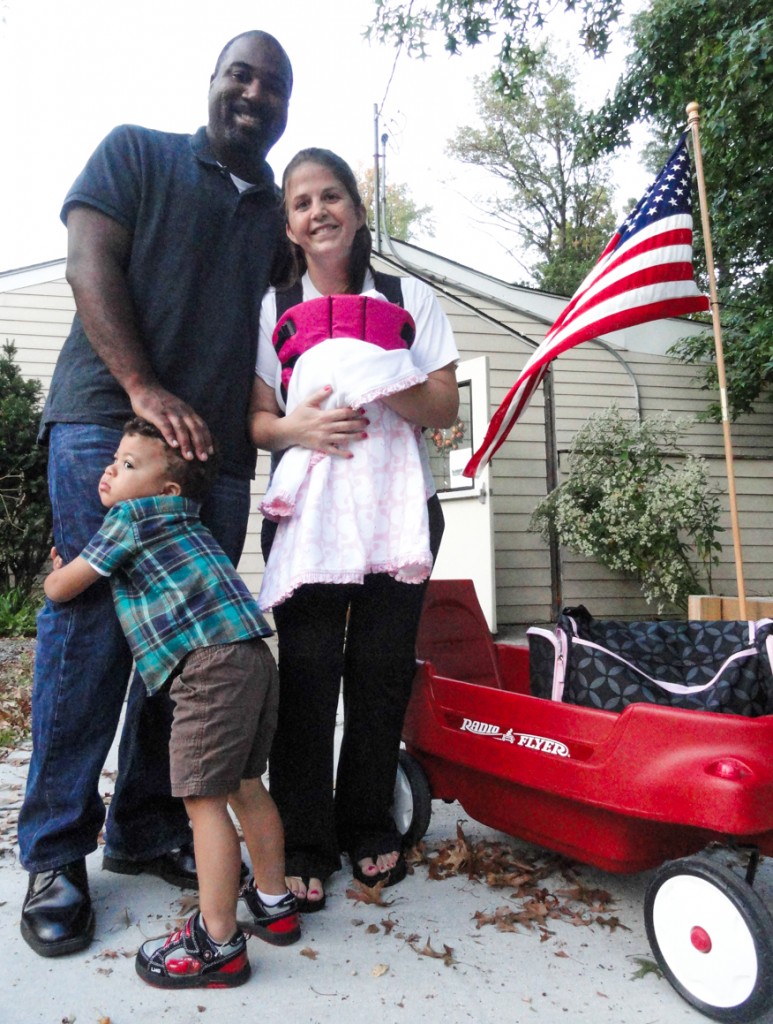
Lance and Valerie Bowers after voting in the 2014 Haddon Township school bond referendum. Credit: Matt Skoufalos.
Timeline: 2045
As forecasters explore the impact of these future forces in greater depth, “the realm of plausible futures is widening,” and residents should prepare accordingly, Fusco said.
“The long-term status quo that’s been there is potentially going to be upended,” he said.
“These [forces can] potentially drive major change in the region, and the region [will] look very different. And if the region looks different, you can bet the neighborhoods are going to be impacted.”
The best way to insulate against the perils of any uncertain future is to contribute to its creation. Fusco, Seymour, and other DVRPC staffers can do their best to model the look and feel of the Philadelphia metro area of 2045, but the people most in position to shape it are the residents of the communities contained within its area of study.
Driving greater civic and political engagement, particularly among a population largely apathetic about and disaffected with local politics, is a significant challenge. Finding a space for broader conversations about what communities are at their core—or what they can or should become—involves aligning the interests of diverse groups of residents, and can be difficult.
“I’ve seen communities change over and over,” Seymour said. “Sometimes it’s an age transition. Sometimes it’s new people moving into a community. Sometimes the change comes from outside of the government and influences in. One person may feel that they have a hard time making a difference, but if that one person can find a few friends and neighbors who feel the same way, those voices become a whole lot stronger.”
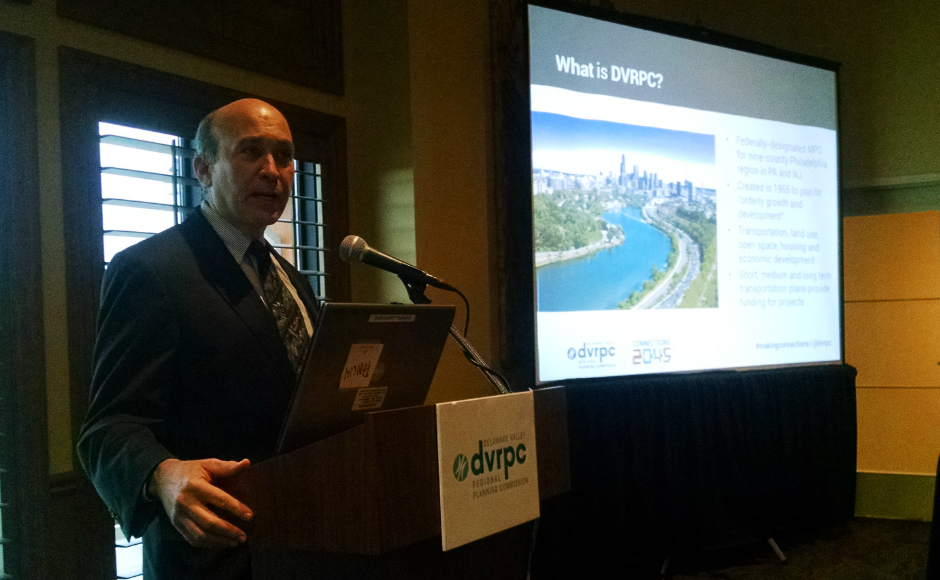
DVRPC Executive Director Barry Seymour speaks at the Camden County Boathouse. Credit: Matt Skoufalos.
“We see all the same problems in Philadelphia [that exist in the suburbs],” Fusco said.
“The residents that have been there for a long time have a vision that’s different from the residents who are new. I don’t think there is an easy resolution to that.
“The challenge is showing [that] change is okay,” he said.

